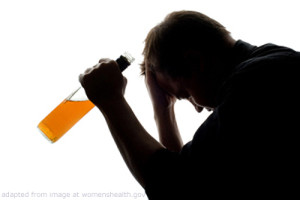Alcohol Killing Directly or Indirectly Half of Working-Age Russians, Study Says

(Paul Goble – Window on Eurasia – Staunton, Nov. 4, 2020)
New studies summarized in the British medical journal, The Lancet, show that Russians have the lowest healthy life expectancy in Europe and that this is the result, to a large degree, of the fact that Russians “drink more than in most countries and do so in ways that are especially harmful to their health and well-being, Olga Savina says.
These studies find, the Polit.ru commentator says, that Russians over the age of 15 on average consumer 11.8 liters of pure alcohol a year, nine percent more than East Europeans, 22 percent higher than West Europeans and 33 percent higher than Americans (polit.ru/article/2020/11/03/alrussia/).
And this excessive consumption is made worse by the manner it is achieved. While others drink more wine and bear, “which harms health less than strong alcohol,” Russians prefer to drink vodka and other high-alcohol-content liquors. And such “immoderate consumption of alcohol” is now the cause of “more than 50 percent of deaths” among working-age Russians.
That figure includes not only the causes Rosstat includes but also deaths from traumas, accidents, murders and suicides, liver cancer, tuberculosis, and pneumonia, all of which may have other causes but are in most cases linked to over-consumption of alcohol and especially binge drinking.
But as disturbing as the 50 percent figure is, Savina continues, the actual situation may be even worse. According to former health minister Veronika Skvortsova, 70 percent of the deaths of working-age Russian men are connected with alcohol, not just among alcoholics who form four percent of the population but among others who drink excessively when they do drink.
Russian studies show that about 40 percent of men and 15 percent of women display drunkenness on a regular basis even if they do not depend on alcohol in ways traditionally associated with alcoholism, Savina continues. Among those that do is Aleksandr Nemtsov in an article at cyberleninka.ru/article/n/rossiyskaya-smertnost-v-svete-potrebleniya-alkogolya/).
And this matters, the Polit.ru writer says. According to the WHO, such customary heavy drinking among Russians is responsible for depressing not only life expectancy among them but also for pushing down the country’s GDP by up to five percent. For both these reasons, the Russian government has sought to reduce alcohol consumption.
Between 2005 and 2016, it raised prices, restricted sales, and promoted abstinence through propaganda and succeeded in cutting the per capita consumption of pure alcohol from 18.7 to 11.7 liters of pure alcohol, a remarkable achievement but one undercut by the fact that these figures include only registered alcohol and not illegal samogon (moonshine).
While consumption of that has always been high in Russia, studies show that as legal alcohol has become more expensive and difficult to acquire, many Russian drinkers are turning from it to moonshine, which often contains poisons, or to still more lethal alcohol surrogates (sciencedirect.com/science/article/abs/pii/S0955395920301511?via%253Dihub#!).
A major reason that Russia’s anti-alcohol efforts have not succeeded is that the government has not addressed the massive unemployment in rural areas where many adults in desperation turn to alcohol and especially samogon as a way of getting through the days even though it shortens their lives.
And Higher School of Economics researchers say that unless Moscow focuses on that problem and on broader issues of economic development, over-consumption of alcohol is likely to remain a bane of Russian existence and a depressing factor on life expectancy there (cyberleninka.ru/article/n/opyt-razvityh-stran-v-oblasti-antialkogolnoy-politiki).
[article also appeared at windowoneurasia2.blogspot.com/2020/11/alcohol-killing-directly-or-indirectly.html]
